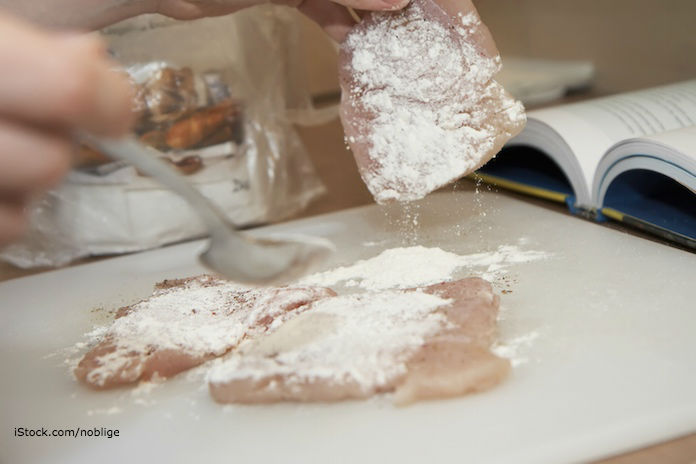Consumer Reports wrote an interesting article about five surprising ways you could get an E. coli infection from flour. With the news that General Mills has expanded their recall of flour associated with a multistate E. coli outbreak, and that the outbreak has grown, this information is valuable.

Consumers have been told for years that it is not safe to eat raw cookie dough or raw cake batter. But did you know that the risk factor in those products isn’t just the raw eggs? Raw flour is an agricultural product that should be cooked before you eat it. It can be contaminated with pathogenic bacteria just like raw meats or raw fruits or vegetables.
But did you know that modeling clay and play dough, ornaments made with flour, and paper mâché are also risky? There are many recipes in old cookbooks for making those products with flour specifically for children to play with. Don’t make those products for your kids. If you do choose to make them, supervise the kids so they don’t put their fingers in their mouths after handling these products (good luck!) and wash hands and work surfaces thoroughly with soap and water afterward.
There are quite a few recipes floating around for truffles made with raw flour, and cookie dough brownies that have a layer of raw cookie dough on top of the cooked brownie. Don’t use those recipes. If the recipe containing flour isn’t cooked, don’t make it.
The fourth possible risk is just using flour. Anyone who has ever baked or cooked with flour knows it can easily fly around the kitchen. Thousands of E. coli bacteria can fit on one tiny particle of flour. And it only take 10 bacteria to make you seriously ill. Dredging meats in flour, sifting flour, and even beating a batter can spread contaminated flour around your kitchen. Make sure that you wash counters, cutting boards, plates, and utensils after you have used flour in your kitchen.
And here’s a risk you probably haven’t thought of: the container you use to store flour. Every time you add flour to that container, it should be thoroughly washed with soap and water. You never know if the batch of flour that was in that container was contaminated.
While there are risk associated with any food, these problems with flour are fairly new to most people. Flour seems like such a dry, benign product. But it can be contaminated just like any other raw agricultural product. So be careful, follow cleaning instructions, wash your hands well while cooking, and be safe.




